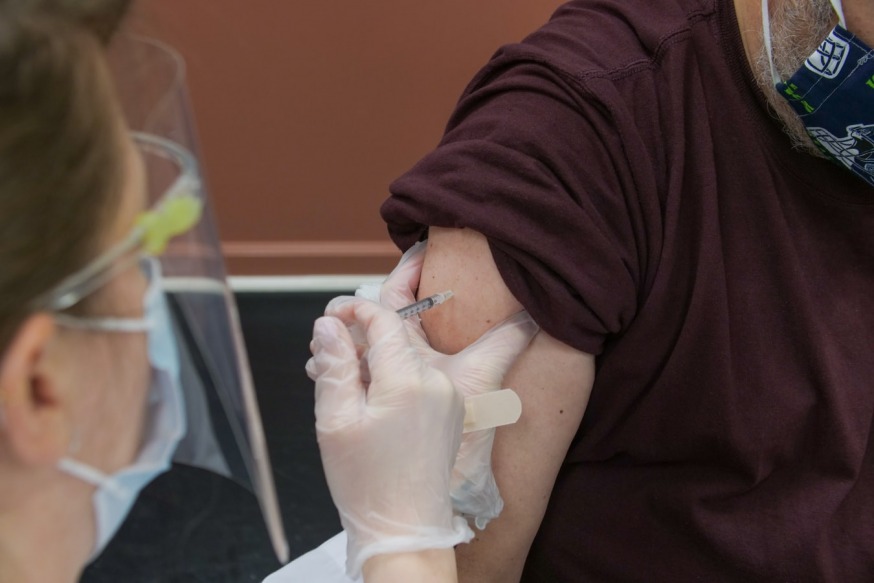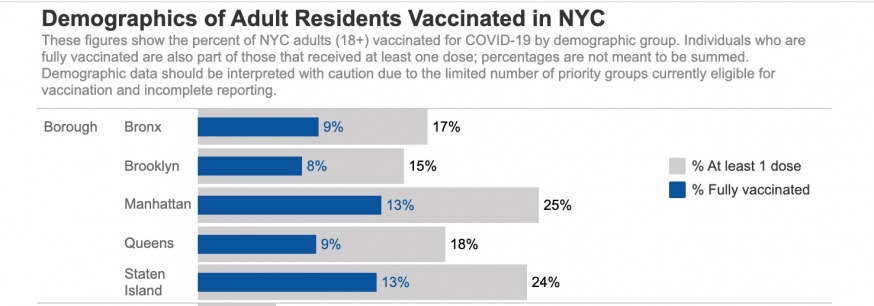
Patient receives Covid-19 vaccine shot (Unsplash @stevencornfield)
March 10, 2021 By Christina Santucci
An estimated 18 percent of adults in Queens have been vaccinated — either partially or fully — against COVID-19 vaccine, a representative from the city Health Department told borough leaders at a virtual meeting Tuesday morning.
About nine percent of adults in the borough have received their first dose of the two-dose vaccines, while an additional nine percent have been fully vaccinated, according to city data. The total percentage in Queens is below that of Staten Island and Manhattan (both 24 percent) and higher than the Bronx (16 percent) and Brooklyn (14 percent).
Chelsea Cipriano from the Department of Health & Mental Hygiene provided the update to the Queens Borough Cabinet as part of a presentation on the city’s efforts to combat COVID-19. She was joined by Laura Atlas from the city’s Test & Trace Corps, and the pair briefed the cabinet about testing, tracing and vaccination efforts in the borough.
So far, more than 390,000 Queens residents have received at least one dose of a COVID-19 vaccine, according to New York state data.

But borough residents should remain vigilant, officials said.
“You don’t throw the oars out of the boat just because you see shore. We are still very much in the middle of an active pandemic,” Cipriano told attendees.
The officials recommended that people continue what they called the “core four” prevention strategies: to stay home if sick, to wear a face covering, to keep six feet away from others and to wash hands or use hand sanitizer.
They also noted that information about the number of people found to be infected with two new COVID-19 variants was available on the city’s website. On Wednesday, city officials reported that the variants — including the B.1.526 variant first identified in New York City — were identified in more than half of positive tests sampled.
“These are variants of concern. They are more transmissible,” Cipriano said.
Following Tuesday’s presentation, members of the Queens Borough Cabinet and the borough president, who chairs the cabinet, asked questions about vaccine sites and eligibility requirements. The cabinet is comprised of district managers from Queens community boards and representatives from city agencies.
Borough President Donovan Richards asked if some of the current testing sites in Queens could also be used as vaccination hubs. “A lot of those particular spots are in areas that are hardest hit,” he said.
In response, Atlas said that vaccination locations require additional space for equipment and for those who receive the shots to be observed by medical professionals afterward.
Vaccine recipients generally have to stay on site for 15 minutes — but those who have previously had allergic reactions should be watched for 30 minutes, according to city health recommendations.
“The testing — essentially all you need is a swab which is very easy to purchase and maintain,” Atlas said. “With the vaccines, you have that additional observation period.”
One Comment

Ha! Once again, Manhattan and Staten Island lead the way. Why? That’s where the money is located. The poor in Brooklyn, Queens and the Bronx are still at the bottom of the ladder. Where are our political leaders? Obviously licking the feet of the folks in Manhattan and Staten Island. Blame falls to the governor, mayor and local pols who have been bought out by monetary interests!